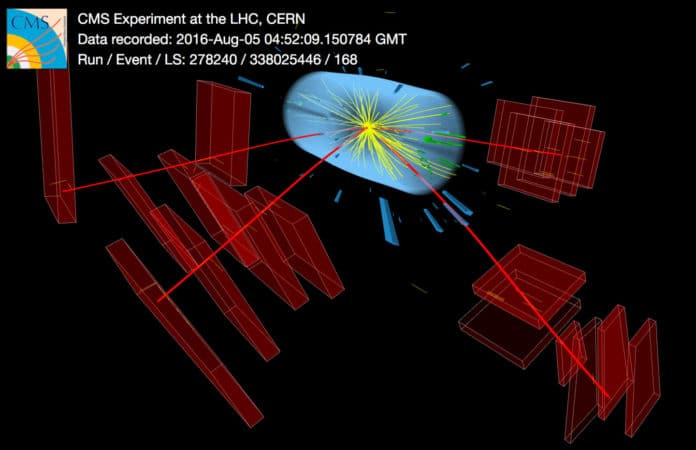Particle physicists are very much interested in estimating the Higgs boson’s lifetime. The experimental value of a particle’s lifetime would allow them to understand the nature of the particle. It will also let them find out whether or not the value matches the value predicted by the Standard Model of particle physics.
It is well known that Higgs boson doesn’t stick around for long: it lives for a mere less than a trillionth of a billionth of a second or, more precisely, 1.6 x 10-22 seconds.
According to theory, so far, experiments have only set bounds on the value of the particle’s lifetime or determined this property with large uncertainty.
In a new study, the CMS collaboration reported a value for the Higgs boson’s lifetime. The value has a small enough uncertainty to confirm that the Higgs boson does have such a short lifetime.
Measuring Higgs boson’s lifetime is quite a difficult task. For one, the predicted lifetime is too short to be measured directly. One possible solution includes measuring a related property called the mass width. The mass width is inversely proportional to the lifetime. Also, it represents the small range of possible masses around the particle’s nominal mass of 125 GeV.
It sounds easy, but it isn’t, as the predicted mass width of the Higgs boson is too small to be easily measured by experiments.
Here, quantum physics comes to the rescue. It can produce short-lived particles such as the Higgs boson with a mass equal to or close to its nominal value or a much larger mass than the nominal value. However, there are significantly fewer chances for this to happen.
This effect manifests a quantum quirk known as Heisenberg’s uncertainty principle. A comparison between the production rate of these large-mass, or “off-shell,” Higgs bosons with that of the nominal or close to nominal, or “on-shell,” Higgs bosons can be used to extract the Higgs boson‘s mass width and therefore its lifetime.
Scientists in this study used this method. They analyzed data collected by the CMS experiment during the second run of the Large Hadron Collider (LHC). They mainly focused on data on Higgs bosons transforming into two Z bosons, which themselves transform into four charged leptons or two charged leptons plus two neutrinos.
Scientists obtained the first-ever evidence for the production of off-shell Higgs bosons. The result suggests that the Higgs boson’s lifetime is 2.1 x 10-22 seconds, with an upper/lower uncertainty of (+2.3/-0.9) x 10-22 seconds.
This value is accurate and agrees with the Standard Model prediction. It also confirms that the particle does indeed have a tiny lifespan.
CMS physicist Pascal Vanlaer said, “Our result demonstrates that off-shell Higgs-boson production offers an excellent way to measure the Higgs boson’s lifetime. nd it sets a milestone in the study of the properties of this unique particle. The precision of the measurement is expected to improve in the coming years with data from the next LHC runs and new analysis ideas.”
